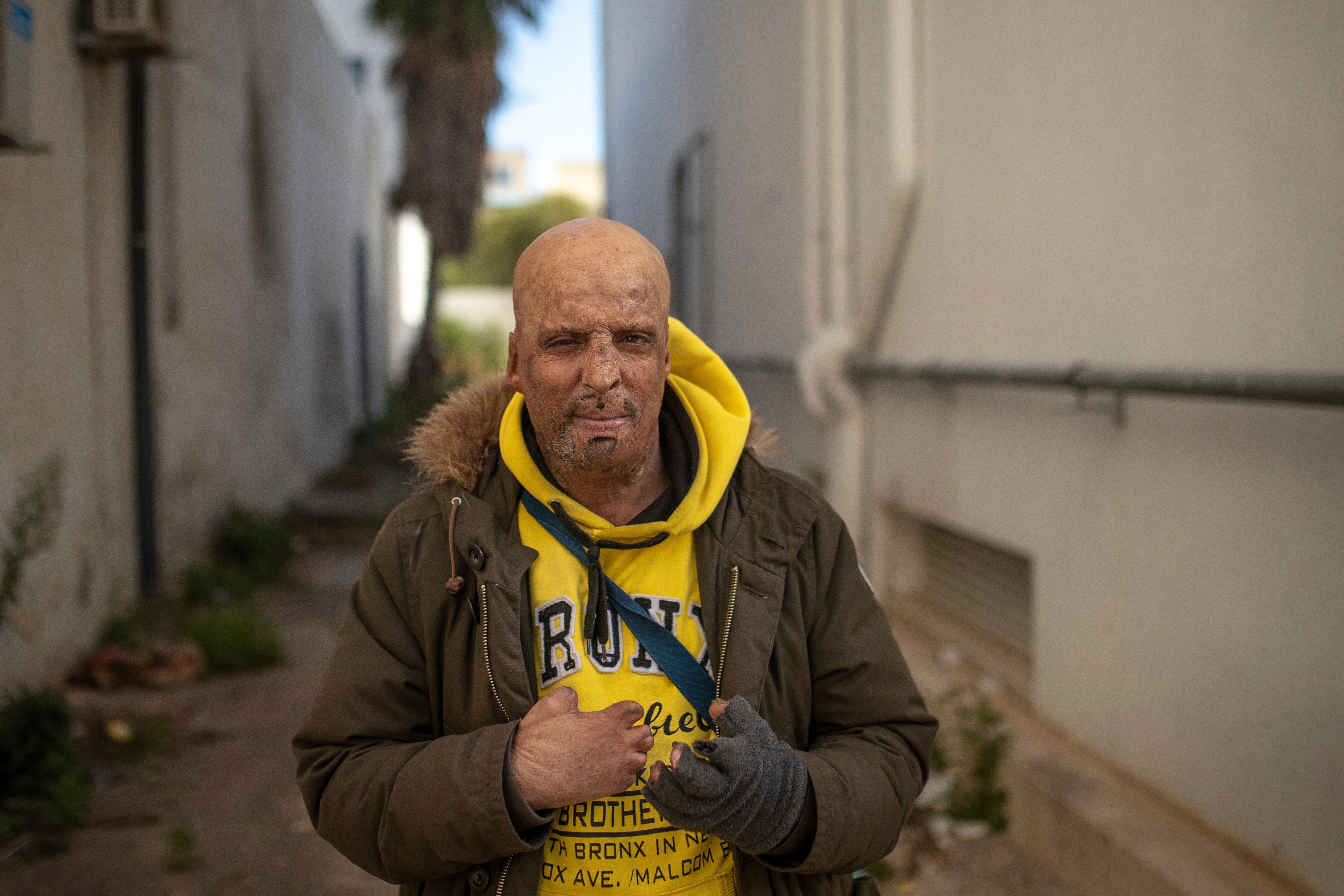AP PHOTOS: Tunisian revolution's victims plea for help
Some lost a leg, some gaze out from permanently scarred faces, others live forever bound to a wheelchair

Your support helps us to tell the story
From reproductive rights to climate change to Big Tech, The Independent is on the ground when the story is developing. Whether it's investigating the financials of Elon Musk's pro-Trump PAC or producing our latest documentary, 'The A Word', which shines a light on the American women fighting for reproductive rights, we know how important it is to parse out the facts from the messaging.
At such a critical moment in US history, we need reporters on the ground. Your donation allows us to keep sending journalists to speak to both sides of the story.
The Independent is trusted by Americans across the entire political spectrum. And unlike many other quality news outlets, we choose not to lock Americans out of our reporting and analysis with paywalls. We believe quality journalism should be available to everyone, paid for by those who can afford it.
Your support makes all the difference.Some lost a leg, some gaze out from permanently scarred faces others live forever bound to a wheelchair. All these men were damaged in Tunisi ’s democratic uprising 10 years ago, and they are begging the government to recognize them as official victims of the revolution.
As Tunisia this week marks the 10th anniversary of the revolt that unleashed the Arab Spring, those injured in the tumult feel disappointed and marginalized.
Since mid-December, they have been holding a sit-in at the office of the Agency for the Revolutionary Martyrs and Wounded, demanding recognition. They voice their demands through megaphones, sit and share stories, or rest on mattresses on the floor.
Some have even tried to set themselves on fire, to emulate the street vendor whose self-immolation in desperation over poverty and police abuse sparked Tunisia’s revolt.
Rached El Arbi, now 30, has been paralyzed since being shot while protesting the autocratic regime of Tunisia’s President Zine El Abidine Ben Ali, who was overthrown on Jan. 14, 2011. A photo of him hospitalized at the time went viral across the Arab world.
But now, instead of El Arbi supporting his family, they’re now supporting him. El Arbi was 20 when he was shot in the neck during a protest and had to undergo three complex operations. He said he was in a coma for four months before he started to recover.
His family wasn’t prepared for the huge medical costs. His mother said she has three other children, and for a year, “they had to be hungry, so Rachad could eat.”
Protester Hosni Kalaia set himself on fire during the uprising. Now 49, he lives with permanent scars on his face and missing fingers. His brother self-immolated in 2015 and died.
Walid Kasraoui lost a leg and has relied on crutches for a decade, but says he has no regrets.
“If I went back in time to the events of the revolution, I would participate again,” he says.
Families have pushed for years for official recognition of those who lost lives or limbs fighting for democracy, and for government financial support. An unofficial list released by the martyrs’ agency counts 129 people killed and 634 injured.
They hope for an official government list to be published on Thursday, the anniversary of the revolution, to guarantee the rights of victims. The government has long promised to formalize such a list after it verifies each case, but efforts have stalled amid other pressing problems.
Kasraoui is running out of patience and says he plans to seek asylum abroad if this list is not published in the next two days.
___
Mehdi El Arem and Bouazza ben Bouazz in Tunis contributed.